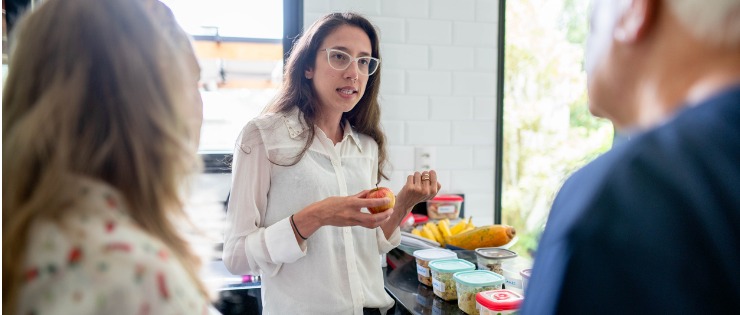
More than a third of adults have high blood pressure, and most of them are considered ‘uncontrolled.’ High blood pressure occurs when the force of blood pumping through the arteries is consistently too high and this puts pressure on the vessel walls. Blood pressure is considered high when it is over 140/90mmHg. This can be taken by a doctor, nurse or other health practitioner.
High blood pressure can cause you to feel dizzy and give you a headache but long term, and when it’s uncontrolled, it can increase the risk of a number of health conditions, especially heart disease, stroke, congestive heart failure, kidney disease and blindness.
A diet considered one of the best in the world is in fact a healthy eating plan designed to help treat or prevent high blood pressure. It’s called the DASH diet or DASH eating plan, which stands for Dietary Approached to Stop Hypertension. It’s been shown to help reduce blood pressure within two weeks and can also help to reduce other cardiovascular risk factors as well as diabetes.
The DASH Diet began as a research study where researchers put participants on a diet that was rich in foods that contained certain nutrients that could lower blood pressure, such as potassium, magnesium, calcium, fibre and protein. It also had a controlled sodium intake of 3000mg per day (this is higher than recommended but much lower than the average intake in America), a nutrient well documented to increase blood pressure.
The study had incredible results, finding that people with hypertension had a reduction in their blood pressure that was comparable to being on a blood pressure medication. They had even greater reductions when sodium was reduced even further, to under 1,500mg per day, which is equivalent to just over half a teaspoon of salt.
DASH diet is based on these food groups, and also provide recommended servings sizes:
Fish
Poultry (chicken, turkey
Beans (pulses, lentils)
Nuts & seeds
Healthy fats and oils
Foods that are recommended to be limited include:
The best way to dramatically reduce salt or sodium in your diet is to eat mostly fresh, whole foods. Really limit any processed or packaged and take away foods and avoid adding salt to your cooking and meals. Low sodium foods are considered those with less than 120mg of sodium per 100g – you can find this in the nutrition information panel on all packaged foods. Great ways to flavour food without the salt is by using fresh and dried herbs and spices.
Other important considerations when trying to control your blood pressure include:
References
https://www.healthdirect.gov.au/what-is-a-healthy-blood-pressure
https://www.mayoclinic.org/healthy-lifestyle/nutrition-and-healthy-eating/in-depth/dash-diet/art-20048456
https://www.hsph.harvard.edu/nutritionsource/healthy-weight/diet-reviews/dash-diet/
https://www.mayoclinic.org/diseases-conditions/high-blood-pressure/in-depth/high-blood-pressure/art-20046974